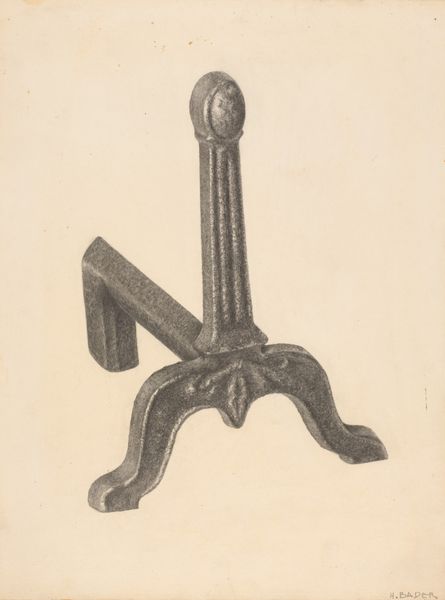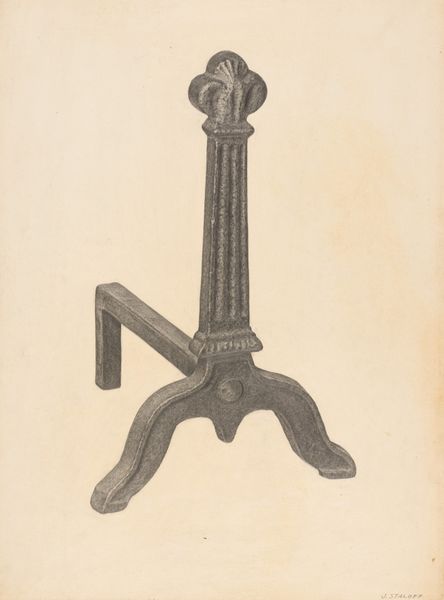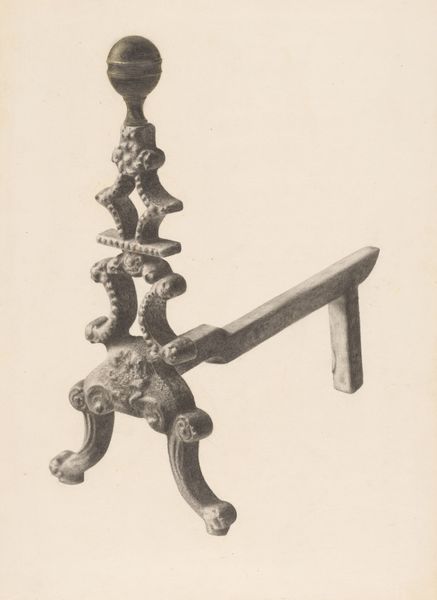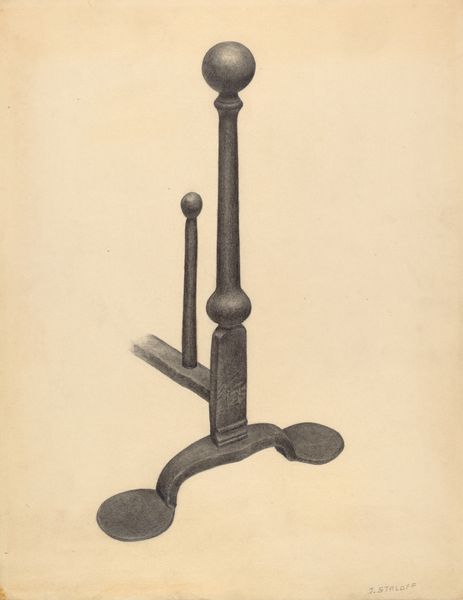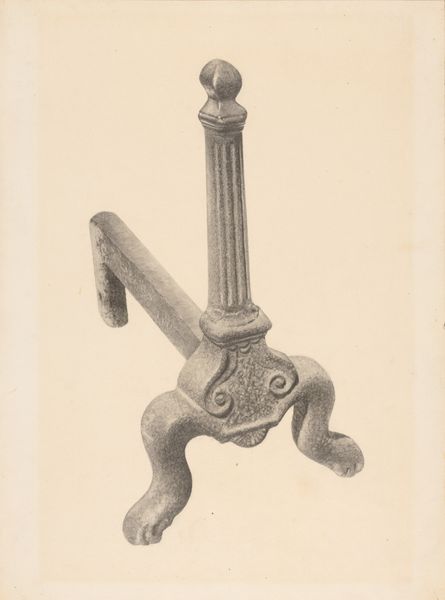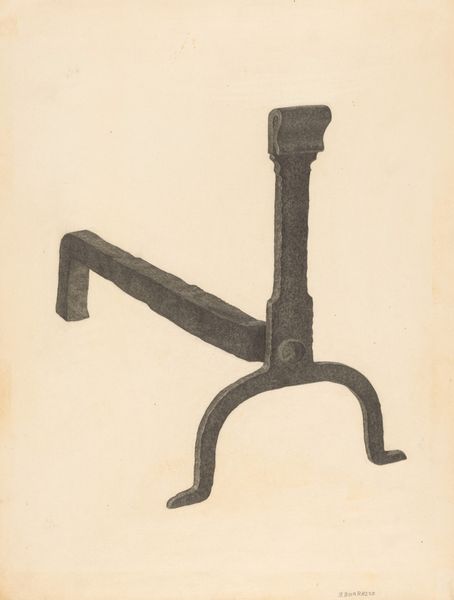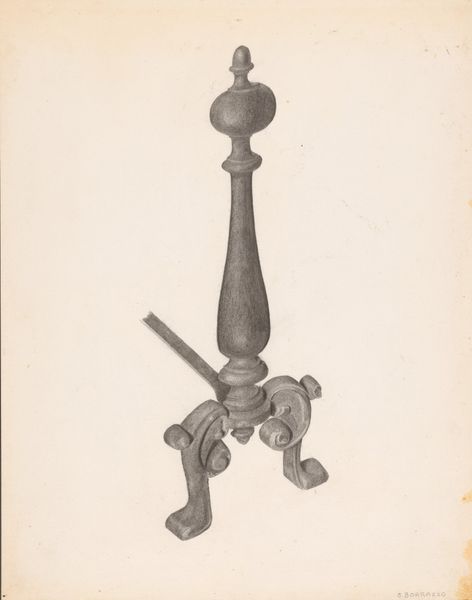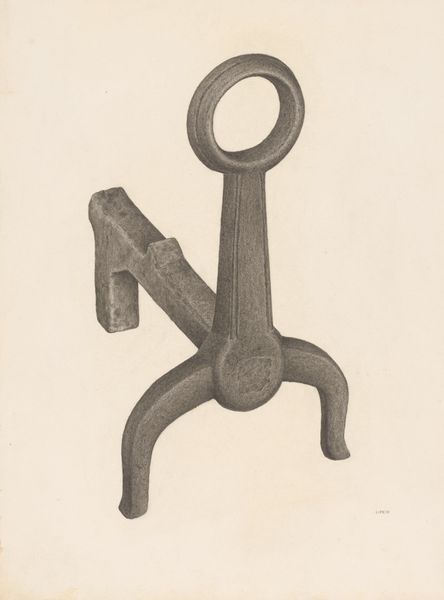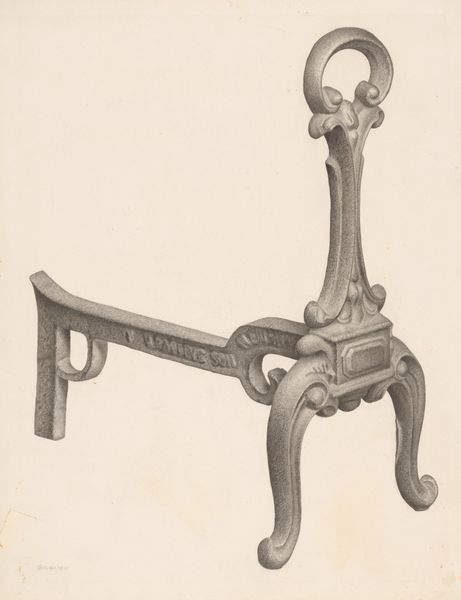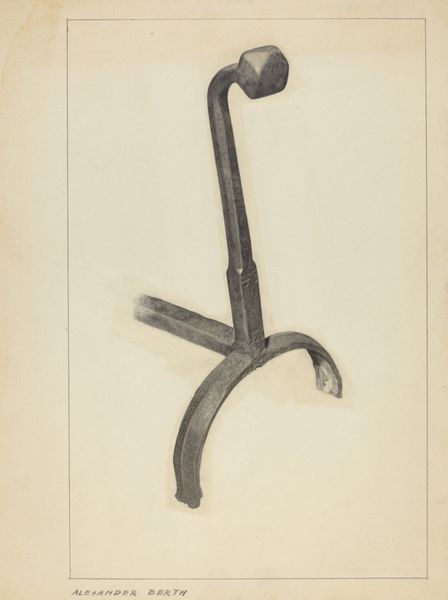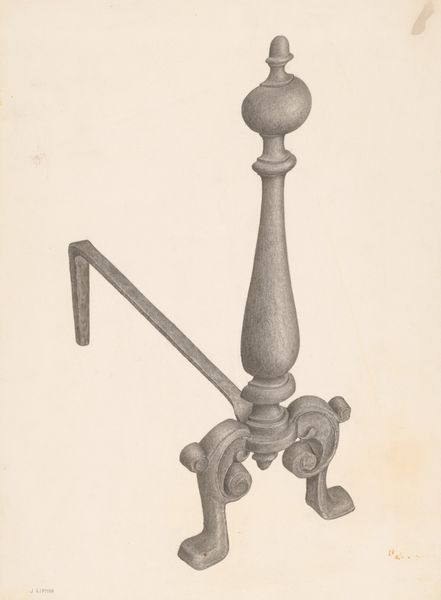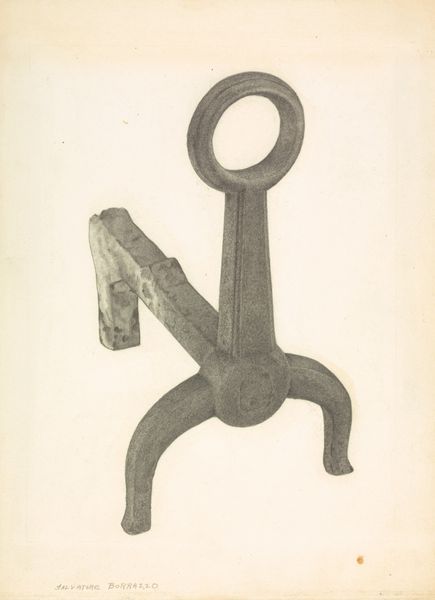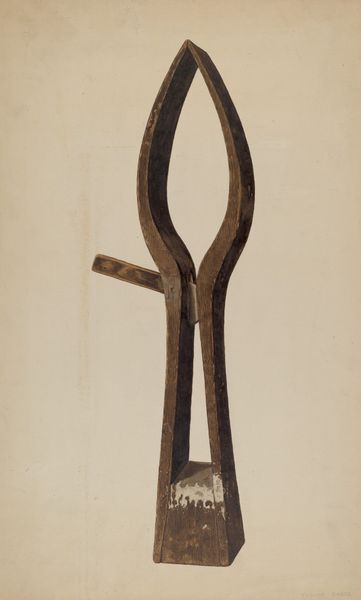
drawing, pencil
#
drawing
#
pencil drawing
#
geometric
#
pencil
#
realism
Dimensions: overall: 41 x 30.7 cm (16 1/8 x 12 1/16 in.) Original IAD Object: 11 1/4" high; 12 1/4 deep; 8 3/8" deep; thickness of shaft: 3/4"
Copyright: National Gallery of Art: CC0 1.0
Herman Bader sketched this andiron, one of a pair, in graphite on paper. Andirons like these were commonplace in homes throughout the late 19th and early 20th centuries in the United States, and even before, serving a functional purpose of holding logs in a fireplace. But consider how even a utilitarian object can reflect prevailing social and aesthetic values. Look at how the andiron’s design incorporates classical architectural elements: a fluted column supporting a molded capital, resting upon cabriole legs. This self-conscious reference to classical forms speaks to the period’s broader embrace of Neoclassicism, an aesthetic language tied to ideals of order, reason, and refinement. It can also be seen as an attempt to elevate everyday domestic life. To fully appreciate the andiron, we can explore period catalogs, architectural pattern books, and social histories of domestic life. These resources can tell us more about the cultural aspirations embedded in the design of even the most functional objects.
Comments
No comments
Be the first to comment and join the conversation on the ultimate creative platform.
